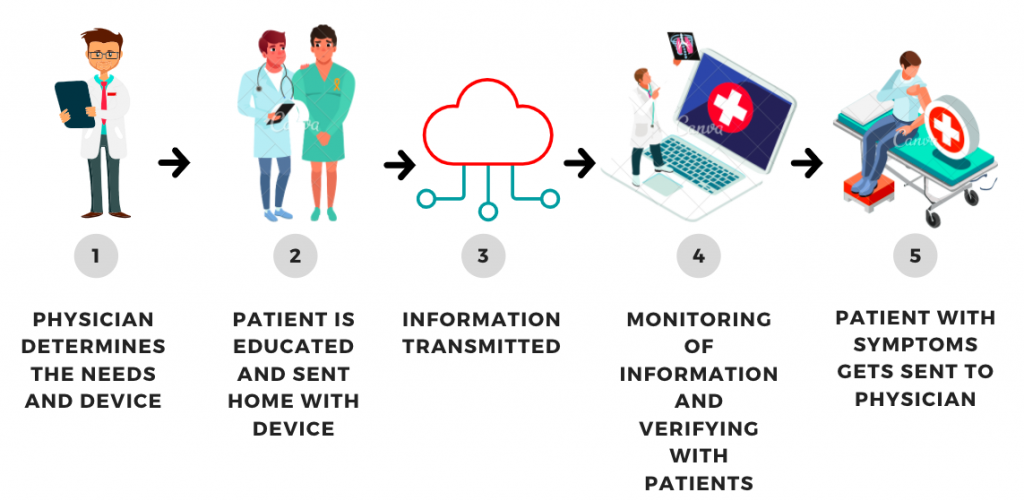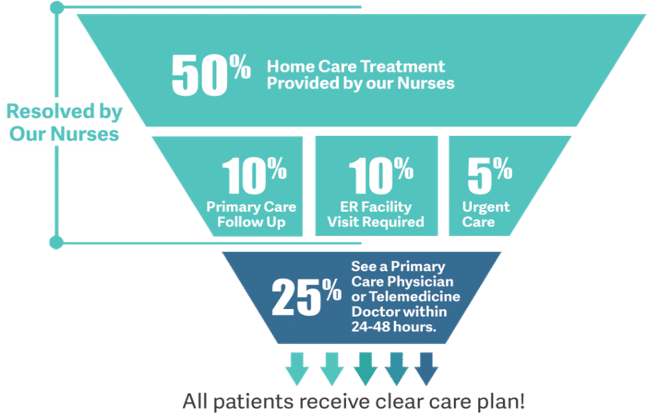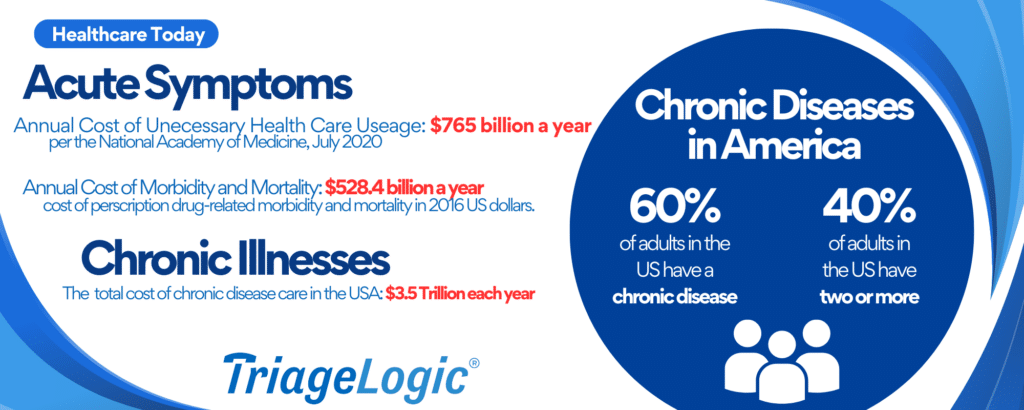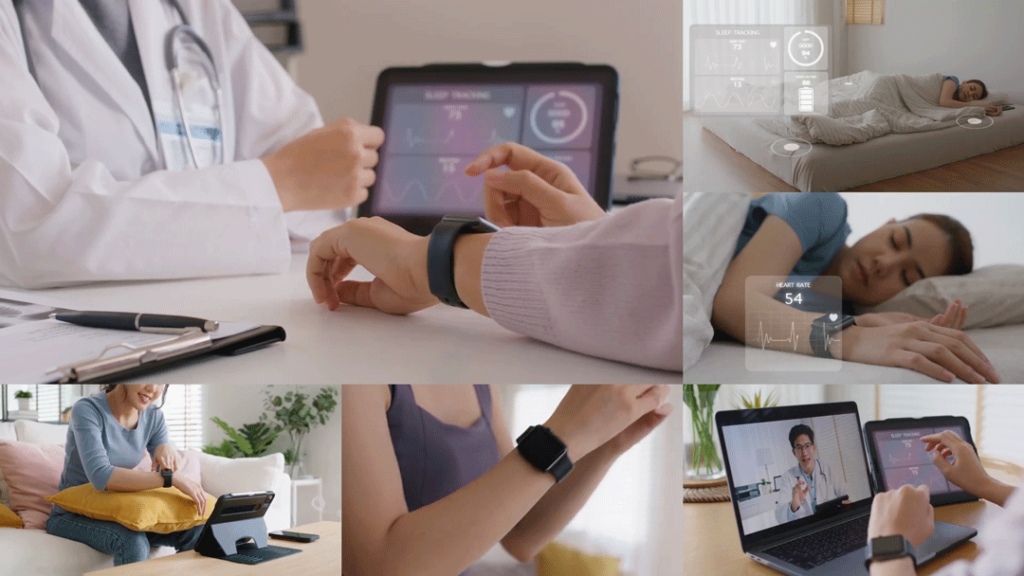As a doctor, you have two priorities to balance: ensuring quality care for your patients, and maximizing revenue for your practice. If those seem like contradictory goals, they don’t have to be. This article discusses solutions to help your team optimize patient care while increasing your revenue. Here are four ways you can use nurse triage and remote patient monitoring (RPM) to achieve them.
1. Improve Revenue and Patient Outcomes With Remote Patient Monitoring
When a doctor implements a remote patient monitoring (RPM) program, they leverage wearable sensors that can track patients’ vitals while they’re at home, then transmit that data back to their providers. This leads to early detection of potential health issues, as well as prompt intervention. Providers need to hire nurses to check this data regularly and meet with patients on a monthly basis so that they are able to receive a reimbursement from CMS. Not only does the reimbursement pay for the cost of this added program, but it can also provide doctors with additional profit.
Many offices find it difficult to coordinate sending devices to their patients, ensuring device data is recorded appropriately, and hiring nurses to help. This is where TriageLogic comes in: we have a full-service program where we manage patients and review their data following CMS guidelines on behalf of your doctors. At the end of the month, we provide all of the data necessary for your doctors to bill CMS. Our cost is about 30% less than the reimbursement amount, allowing your doctors to increase their income.
How Does It Work? Continuous Monitoring
Nurses are tasked with reviewing the large amounts of patient data that RPM devices record. When a nurse spots early indications of negative health changes — like a patient with hypertension who has an abnormally high blood pressure reading — that nurse contacts the patient to evaluate them and schedule a visit with their provider if additional care is needed. TriageLogic has nurses available 24/7 for contacting patients whenever emergency reasons arise.
The RPM Process

Avoiding Health Complications
Proactive monitoring is ideal for patients struggling with chronic disease. Those with diabetes, for example, can benefit from continuous glucose monitoring, which helps maintain optimal blood sugar levels and prevents complications like diabetic ketoacidosis.
Enhanced Patient Safety
By keeping a close watch on health metrics, providers can ensure better patient safety and reduce the chances of adverse events. This is particularly crucial for those who are elderly or have multiple chronic conditions and are at higher risk for complications.
2. Improve Patient Access to Your Practice With Nurse Triage
A common complaint among doctors is that a health condition does not wait to happen during office hours. As a result, many practitioners take patient phone calls on nights and weekends to help patients navigate the most appropriate care needed to address their symptoms. However, this extra work can result in doctor burnout and loss of income. The solution is to hire triage nurses that will follow your guidelines to answer patient calls when your office is closed.
Nurse triage helps patients understand if and when they really need to go to the ER. When patients call, they speak with registered nurses over the phone who use nurse triage protocols to evaluate the severity of their symptoms and determine the most appropriate levels of care needed. Not only does this lead to better health outcomes for your patients who need immediate care, it also avoids unnecessary ER visits from those who don’t. (Check out this article on how you can evaluate a nurse triage company.)
Most patient phone calls can be handled by a triage nurse without the need for a physician. The chart below shows percentages for the outcomes that patient callers typically experience.

Cost Efficiency
By identifying nonemergency cases, triage nurses can reduce unnecessary hospital admissions, leading to substantial cost savings for healthcare facilities. All of the information that nurses collect during their calls with patients is also shared directly with the appropriate providers for continuity of care. In addition, nurses can use custom orders from your providers to ensure that your patients receive personalized care.
3. Expand Access to Care
For patients residing in remote or underserved areas, access to health care can be challenging. Nurse triage and RPM bridge this gap by providing healthcare services without the need for frequent in-person visits. This benefits patients with mobility issues or chronic conditions.
Patients in rural areas can be advised on the severity of their symptoms through nurse triage, while RPM provides continuous review of their vitals.
Convenience
Monitoring health from the comfort of home reduces the burden on patients and their families. Again, this convenience is especially valuable for the elderly and those with disabilities. It also reduces the risk of exposure to infections and protects those who are immunocompromised.
Inclusive Care
Nurse triage and RPM make health care more inclusive by reaching populations that might otherwise be neglected. For example, low-income families who may struggle with transportation costs can still receive consistent and timely medical assistance and attention.
4. Leverage the Economic Benefits
Similar to the ER example above, nurse triage and RPM benefit doctors whose practices treat nonemergency situations. They standardize patient review and offer guidance on symptom severity, which reduces practice expenses and even generates revenue.
The fact that “[n]inety percent of the nation’s $4.5 trillion in annual health care expenditures are for people with chronic and mental health conditions” further justifies the necessity for these services.

Revenue Generation
Remote patient monitoring services can offer a steady income stream for healthcare providers. CMS will reimburse up to $120 per patient per month, ensuring that providers are compensated well for this form of patient health management.
Reduced Liability
Doctors must provide patients with sufficient support both during and after normal office hours. Nurse triage can reduce practice liability with nurses who are available 24/7 to answer patient medical questions and review health vitals.
Let TriageLogic Help You Optimize Patient Care
Nurse triage and RPM offer strategic benefits for care delivery, health outcomes, and revenue generation. The former ensures that those with the greatest needs receive the most immediate care, while the latter provides a proactive means of catching symptoms before they worsen.
By integrating these two services with your practice, your team can create a more efficient, accessible, and cost-effective healthcare environment. If you have questions or would like to discuss a program, contact us today to learn more.
About TriageLogic
TriageLogic is a URAC-accredited, physician-led provider of top-quality nurse telehealth technology, remote patient monitoring, and medical call center solutions. Founded in 2007, the TriageLogic Group now serves more than 22,000 physicians and covers over 42 million lives nationwide.





